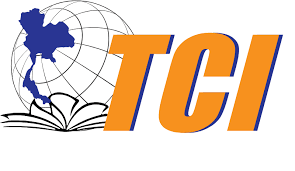Comparative Analysis of Digital Agriculturist Support Tools: Evaluating Efficiency in Reducing Costs
Keywords:
pH meter, temperature, moisture, agronomyAbstract
Digital agriculture leverages advanced technologies to optimize farming, enhance crop yields, and promote sustainability. Precision farming improves resource management, with soil pH, electrical conductivity (EC), temperature, and moisture being key factors influencing soil chemistry, nutrient availability, and plant health. However, inconsistencies in measurement tools can lead to suboptimal decisions, affecting productivity and sustainability. This study compares the accuracy, efficiency, and cost-effectiveness of two portable soil analysis tools: the YY-1033 Soil pH Meter and the A-2. The YY-1033 offers a pH range of 0.0-14.0 (±0.1 accuracy) and an EC range of 0.00-20.00 mS/cm (±0.1 accuracy), using a puncture electrode and bluetooth connectivity for real-time data logging. The A-2, with a pH range of 3.5-9.0 (±0.5 accuracy) and an EC range of 1.5-15.0 mS/cm (±0.5 accuracy), employs an aluminum electrode and lacks digital connectivity. A randomized complete block design (RCBD) was used and data were analyzed through Analysis of Variance (ANOVA) and Least Significant Difference (LSD) tests at a 95% confidence level. Results showed significant differences in pH and EC measurements, with the YY-1033 demonstrating higher precision, particularly in extreme soil conditions. However, both devices provided reliable temperature and moisture readings. The coefficient of determination (R²) values for pH (0.930) and EC (0.911) confirmed accuracy differences. Despite the benefits, research in this area remains limited, especially in Thailand. Adopting efficient and cost-effective soil measurement tools can enhance precision farming, improve yields, and support sustainability. Expanding research in this field will ensure that farmers have access to reliable technologies. Integrating GIS and AI-based soil monitoring can further optimize agricultural decision-making, while future studies should assess the long-term cost-effectiveness and reliability of these tools.
References
Butraphon, S. 2019. Importance and measurement of soil pH. Kasetsart Agriculture Journal 5(25): 33-36. (in Thai)
Cao, H., Chen, R., Wang, L., Jiang, L., Yang, F., Zheng, S., Wang, G. and Lin, X. 2016. Soil pH, total phosphorus, climate and distance are the major factors influencing microbial activity at a regional spatial scale. Scientific Reports 6: 1-10.
Eldeeb, M., Espinoza, C. and Atashbar, M.Z. 2023. Espial: Electrochemical soil pH sensor for in situ real-time monitoring. Micromachines 14(12): 2188.
Everhart, E. 1994. Department of Horticulture. IOWA State University.
Fierer, N. and Jackson, R.B. 2006. The diversity and biogeography of soil bacterial communities. Proceedings of the National Academy of Sciences of the United States of America 103: 626-631.
Maleki, M.R., Abbaspour-Gilandeh, Y. and Hemmat, A. 2010. Design and development of a portable soil electrical conductivity detector. Sensors & Actuators A: Physical 162(2): 261-267.
Merl, T., Rasmussen, M.R., Koch, L.R., Søndergaard, J.V., Bust, F.F. and Koren, K. 2022. Measuring soil pH at in situ like conditions using optical pH sensors (pH-optodes). Soil Biology and Biochemistry 175: 108862.
Rousk, J., Bååth, E., Brookes, P.C., Lauber, C.L., Lozupone, C., Caporaso, J.G., Knight, R. and Fierer, N. 2010. Soil bacterial and fungal communities across a pH gradient in an arable soil. The ISME Journal 4: 1340-1351.
Seifi, M.R. and Alimardani, R. 2010. Design and development of a portable soil electrical conductivity detector. International Journal of Agriculture and Biology 12(6): 964-968.
Slessarev, E.W., Lin, Y., Bingham, N.L., Johnson, J.E., Dai, Y., Schimel, J.P. and Chadwick, O.A. 2016. Water balance creates a threshold in soil pH at the global scale. Nature 540(7634): 567-569.
Staudinger, C., Strobl, M., Breininger, J., Klimant, I. and Borisov, S.M. 2019. Fast and stable optical pH sensor materials for oceanographic applications. Sensors and Actuators, B: Chemical 282: 204-217.
Steinegger, A., Wolfbeis, O.S. and Borisov, S.M. 2020. Optical sensing and imaging of pH values: spectroscopies, materials, and applications. Chemical Reviews 120: 12357-12489.
Tecon, R. and Or, D. 2017. Biophysical processes supporting the diversity of microbial life in soil. FEMS Microbiology Reviews 41: 599-623.
Yuzhakov, M.S., Filchenko, D.I., Bad’in A.V. and Berzin A.K. 2021. Galvanic pH sensor for continuous monitoring of soil parameters in agriculture. Journal of Physics Conference Series 2140: 012023.

Downloads
Published
How to Cite
Issue
Section
License
Copyright (c) 2025 Recent Science and Technology

This work is licensed under a Creative Commons Attribution-NonCommercial-NoDerivatives 4.0 International License.
The content and information in the article published in Journal of Rajamangala University of Technology Srivijaya It is the opinion and responsibility of the author of the article. The editorial journals do not need to agree. Or share any responsibility.






